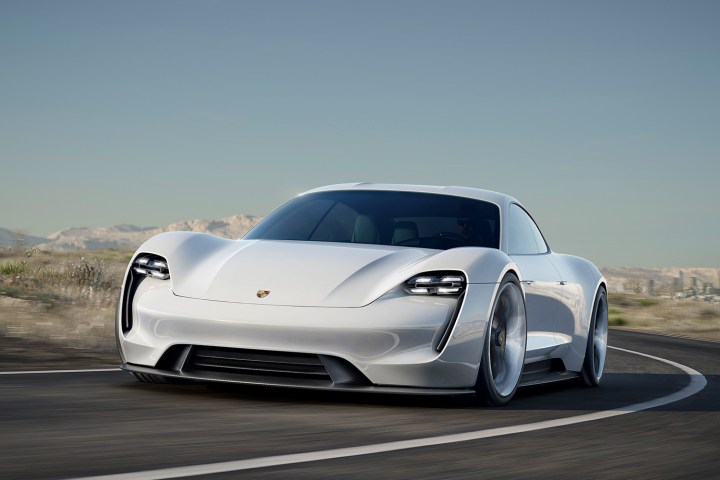
The money will be pumped into related projects over the next four years, the Stuttgart, Germany-based company said on Monday, February 5.
Porsche CEO Oliver Blume said that the decision to bet big on its electric vehicle (EV) efforts was “setting an important course for the future.”
Offering more details on costs, the automaker said that around $620 million will be set aside for the development of variants of its much-anticipated, fully electric Mission E car, and more than $1 billion will go toward electrification and hybridization of its existing product range.
In addition, several hundred million dollars will be invested in expanding current Porsche sites, while around $860 million will go toward new technologies, charging infrastructure, and smart mobility.
Porsche’s Mission E electric vehicle
Porsche is already well into the development of its Mission E vehicle, due out in 2019. With Tesla’s Model S in its sights, the car will be able to hit 60 mph in under 3.5 seconds and offer a range of 311 miles (500 km). Notably, the charging time will be very short, taking only 15 minutes to energize the battery for a 248-mile (400 km) drive.
In a recent interview, Blume revealed that the Mission E will be equipped with Level 4 autonomous driving functionality, meaning it will be packed with self-driving features. But the Porsche chairman was mindful that owners will be keen to sometimes take full control of their flashy sports cars, saying, “There are situations in traffic jams where you’ll be able to read a newspaper, but our customers take pleasure from driving and this will remain.”
The first Mission E prototypes began testing in 2017 as part of a two-year development phase, with a production date likely set for mid-to-late 2019.
They’re all at it
Ford, among others, also recently announced a significant investment in EVs, promising $11 billion over the next four years for the launch of 40 hybrid and fully electric cars in the same time frame.
With battery technology advancing, related costs declining, and governments around the world announcing plans to phase out fossil fuel-powered vehicles in the coming years, it’s no wonder automakers are intensifying their efforts when it comes to EVs. For Porsche, Ford, and many others, the electric revolution has already begun.


